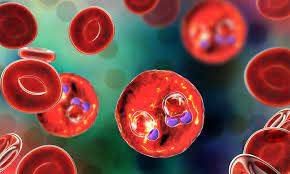Comprehensive Guide on How to Prevent Malaria
Introduction:
Malaria, a deadly disease caused by the Plasmodium parasite, continues to be a significant global health challenge, especially in tropical and subtropical regions. According to the World Health Organization (WHO), there were an estimated 229 million cases of malaria worldwide in 2019, with over 400,000 deaths. However, the good news is that malaria is preventable and treatable. In this comprehensive guide, we'll delve into various strategies and methods to prevent malaria, ranging from personal protective measures to community-wide interventions.
Understanding Malaria:
Before discussing prevention strategies, it's essential to understand how malaria spreads and its lifecycle. Malaria is primarily transmitted through the bite of infected female Anopheles mosquitoes. These mosquitoes typically bite between dusk and dawn, although some species may bite during the day. Once infected, the parasites multiply in the liver before infecting and destroying red blood cells, leading to symptoms such as fever, chills, and flu-like illness.
Preventive Measures:
1. Use of Insecticide-Treated Bed Nets (ITNs):
ITNs are one of the most effective tools for preventing malaria transmission, particularly in endemic regions. These nets are treated with insecticides, usually pyrethroids, which repel and kill mosquitoes. When properly used, ITNs create a physical barrier between individuals and mosquitoes, reducing the risk of bites while sleeping. WHO recommends universal coverage of ITNs in malaria-endemic areas, especially for vulnerable populations such as pregnant women and children under five.
2. Indoor Residual Spraying (IRS):
IRS involves spraying the interior walls of houses with insecticides, targeting resting mosquitoes. This method helps to reduce mosquito populations and prevent them from transmitting malaria. IRS is most effective when combined with other interventions, such as ITN use, and should be implemented as part of integrated vector management strategies.
3. Environmental Management:
Modifying the environment to reduce mosquito breeding sites is another crucial aspect of malaria prevention. Mosquitoes breed in stagnant water, so eliminating standing water sources such as puddles, discarded tires, and open containers can help reduce mosquito populations. Additionally, proper drainage and regular cleaning of water storage containers can prevent mosquito breeding.
4. Personal Protective Measures:
Individuals can take several steps to protect themselves from mosquito bites and reduce their risk of malaria infection:
- Wear long-sleeved shirts and long pants, especially during peak mosquito activity times.
- Use insect repellents containing DEET, picaridin, or oil of lemon eucalyptus on exposed skin.
- Avoid outdoor activities during dusk and dawn when mosquitoes are most active.
- Use mosquito coils, mats, or electric vaporizers indoors to repel mosquitoes.
5. Chemoprophylaxis:
For travelers visiting malaria-endemic regions, taking antimalarial medications as prophylaxis can significantly reduce the risk of infection. Several antimalarial drugs, such as chloroquine, atovaquone-proguanil, doxycycline, and mefloquine, are available for prophylactic use. The choice of medication depends on factors such as the destination, drug resistance patterns, and individual medical history. Travelers should consult healthcare providers to determine the most appropriate prophylaxis regimen.
6. Community Engagement and Education:
Community involvement and education play a vital role in malaria prevention efforts. Public awareness campaigns can inform communities about the importance of malaria prevention measures, promote early diagnosis and treatment, and encourage community participation in vector control activities. Engaging local leaders, healthcare workers, and community volunteers can help mobilize resources and promote sustainable malaria control strategies.
7. Integrated Vector Management (IVM):
IVM is a holistic approach to vector control that combines multiple interventions to target mosquitoes at different stages of their lifecycle. This includes environmental management, larval control, insecticide-treated nets, indoor residual spraying, and community participation. By addressing vector control comprehensively, IVM aims to reduce mosquito populations and minimize the risk of malaria transmission.
8. Prompt Diagnosis and Treatment:
Early diagnosis and prompt treatment of malaria cases are essential for preventing severe illness and interrupting transmission. Rapid diagnostic tests (RDTs) provide a quick and accurate diagnosis of malaria, allowing healthcare providers to initiate appropriate treatment promptly. Artemisinin-based combination therapies (ACTs) are recommended as first-line treatment for uncomplicated malaria, while severe cases may require intravenous antimalarial medications and supportive care.
Conclusion:
Preventing malaria requires a multifaceted approach that combines individual, community, and environmental interventions. By adopting a combination of strategies such as the use of insecticide-treated bed nets, indoor residual spraying, environmental management, and personal protective measures, we can significantly reduce the burden of malaria and move closer to the goal of malaria elimination. However, sustained political commitment, adequate funding, and collaborative efforts at global, national, and local levels are crucial for achieving long-term success in malaria prevention and control.


